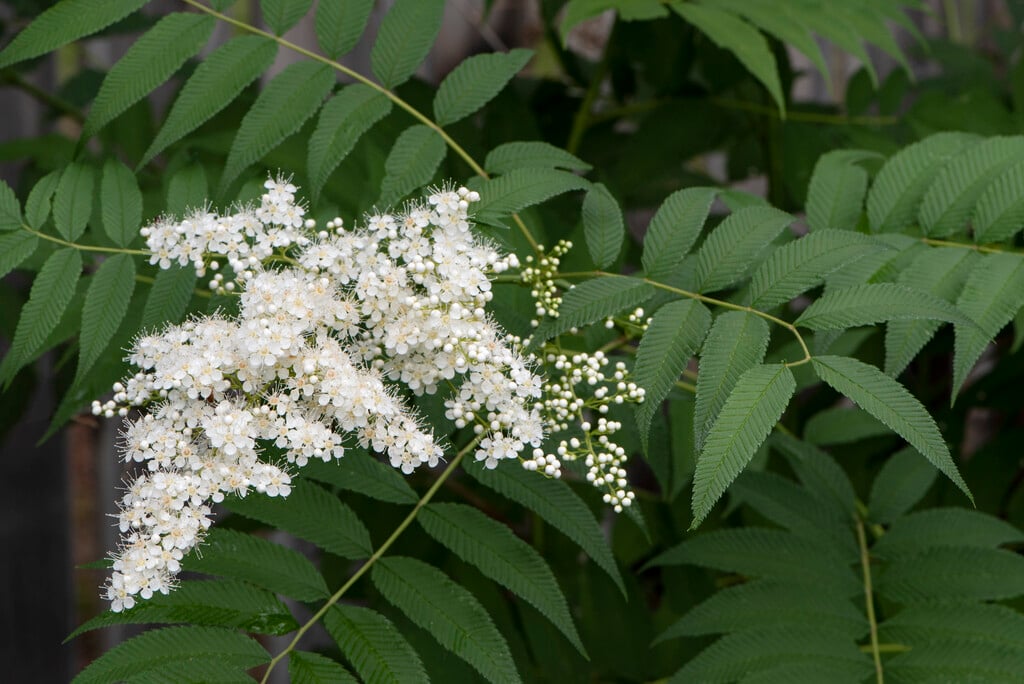Sorbaria sorbifolia
false spirea
A small to medium-sized, deciduous shrub to 3m tall with upright stems. Leaves are divided into 13-25, sharply-toothed, dark green leaflets and small, creamy-white flowers are borne on narrow, stiffly erect panicles in summer
Size
Ultimate height
2.5–4 metresTime to ultimate height
5–10 yearsUltimate spread
2.5–4 metresGrowing conditions
Moisture
Moist but well–drainedpH
Neutral, AlkalineColour & scent
| Stem | Flower | Foliage | Fruit | |
| Spring | Green | |||
|---|---|---|---|---|
| Summer | Cream White | Green | ||
| Autumn | Green | |||
| Winter |
Position
- Full sun
- Partial shade
Aspect
East–facing or North–facing or South–facing or West–facing
Exposure
Exposed or Sheltered Hardiness
H5Botanical details
- Family
- Rosaceae
- Native to GB / Ireland
- No
- Foliage
- Deciduous
- Habit
- Suckering, Bushy
- Genus
Sorbaria are large, deciduous suckering shrubs with attractive pinnate leaves and small, white, spiraea-like flowers borne in large terminal panicles in summer
- Name status
Correct
- Plant range
- N Asia
How to grow
Cultivation
Best grown in moderately fertile, moist but well-drained soil. Remove suckers to prevent plants spreading widely and forming thickets. Has the potential to become a nuisance if not managed well
Propagation
Propagate by semi-hardwood cuttings or by seed. Rooted suckers can be transplanted in winter or autumn
Suggested planting locations and garden types
- Cottage and informal garden
- Low Maintenance
- Flower borders and beds
Pruning
Pruning group 6. Remove unwanted suckers in winter
Pests
Generally pest-free
Diseases
Generally disease-free
Love gardening
Sign up to receive regular gardening tips, inspiration, offers and more
View our Privacy Policy
Get involved
The Royal Horticultural Society is the UK’s leading gardening charity. We aim to enrich everyone’s life through plants, and make the UK a greener and more beautiful place.

